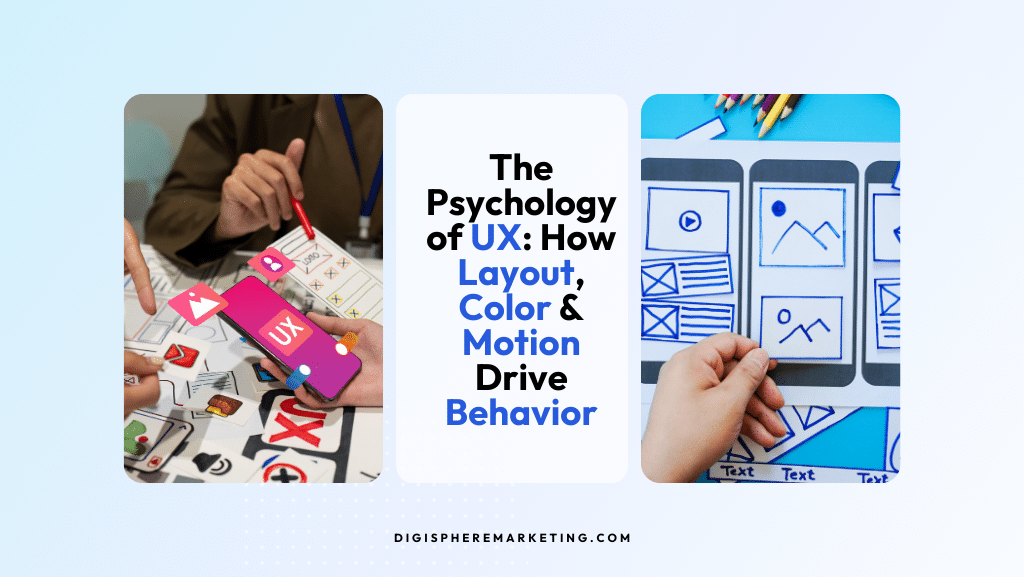When people visit your website, they make split-second decisions about whether to stay, explore, or leave. The way your site looks and feels has a powerful influence on those choices. This is the essence of user experience (UX) psychology. By understanding how layout, color, and motion affect behavior, businesses can design websites that not only look professional but also guide visitors toward taking action.
At DigiSphere Marketing, we combine psychology and design to create websites that are functional, engaging, and built to convert.

The Role of Layout in User Behavior
A well-structured layout gives users a clear path to follow. If a site feels cluttered or confusing, visitors are more likely to bounce.
-
Visual hierarchy: Headlines, calls-to-action, and key visuals should stand out immediately.
-
Whitespace: Space around elements improves readability and directs focus to what matters most.
-
Navigation: Clear menus and logical page flow reduce friction and make browsing intuitive.
A thoughtful layout builds trust because it shows your business values clarity and professionalism.
How Color Shapes Perception
Color is one of the most powerful psychological triggers in web design. It affects mood, memory, and the way people perceive your brand.
-
Blue often conveys trust and reliability, which is why many banks and tech companies use it.
-
Red creates urgency and excitement, making it a popular choice for sales and promotions.
-
Green is associated with growth and health, ideal for eco-friendly or wellness brands.
-
Neutral tones provide balance and help bold colors stand out.
The key is to use color intentionally so that it supports your brand identity while encouraging the right actions from users.
Motion and Interaction Psychology
Subtle animations and motion cues can guide users through a website and make interactions feel more engaging. However, overusing motion can create distraction or even frustration.
-
Microinteractions: Small animations like button hovers or progress indicators give feedback and build user confidence.
-
Directional cues: Motion can draw attention to forms, calls-to-action, or important messages.
-
Loading effects: Smooth transitions and progress bars help reduce perceived wait times and keep users engaged.
When motion is used strategically, it enhances the overall experience and encourages visitors to keep exploring.
Why UX Psychology Matters for SEO and Conversions
UX is not only about how a site looks but also about how it performs. Google rewards websites that keep users engaged with longer session times, lower bounce rates, and clear navigation. A site that blends effective layout, color, and motion will not only rank better but will also convert more visitors into leads or customers.
Investing in UX psychology means investing in both your reputation and your bottom line.
DigiSphere Marketing’s Approach to UX Design
We go beyond creating websites that look attractive. Our team builds digital experiences that align with how users think and behave. Every design decision is backed by strategy, whether it is choosing the right color palette, organizing content for easy navigation, or adding motion elements that guide visitors toward action.
The result is a website that feels seamless, builds trust, and supports your overall marketing goals.
The psychology of UX is about more than aesthetics. By designing with layout, color, and motion in mind, businesses can influence behavior, improve SEO, and increase conversions.
📞 Is your website designed with psychology in mind? Contact DigiSphere Marketing today and let us create a user experience that keeps visitors engaged and drives results.





















